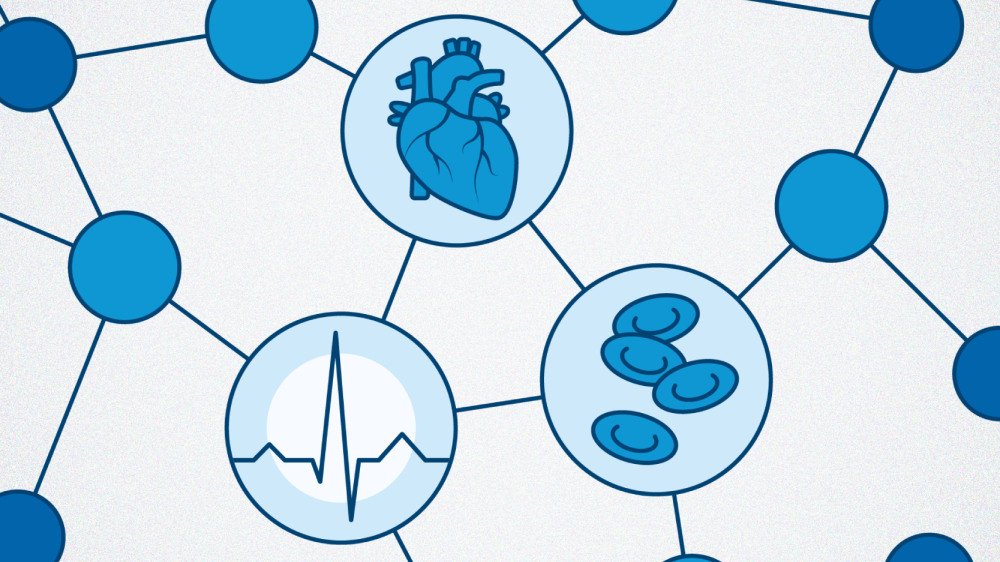NC3Rs cardiovascular portfolio
Projects in the NC3Rs cardiovascular portfolio focus on four key areas:
1. Developing new cardiovascular models
Our Project Grant and PhD Studentship schemes support the development and validation of new cardiovascular models. This includes 12 Studentships funded in collaboration with the British Heart Foundation.
Models which have been developed include:
- An in vitro model to study atherosclerosis. Dr Stephen White (Manchester Metropolitan University) has immortalised human coronary artery endothelial cells and cultured these in custom flow apparatus to create a model to test the effect of compounds on the vasculature.
- An artificial human blood vessel to study platelet activation. Dr Alan Harper (Keele University) used a tissue engineering approach to combine human cells with collagen scaffold to produce an artificial human blood vessel and has shown that human blood samples will form clots in the vessel.
- An iPSC derived cardiomyocyte model to study the consequences of genetic variants in atrial and ventricular arrhythmias. Dr Katja Gehmlich (University of Birmingham) has created an iPSC-derived cardiomyocyte model to study the predisposition to atrial and ventricular arrhythmias caused by mutations in cardiac genes.
- Myocardial slices to study cardiovascular disease in vitro. Professor Cesare Terracciano (Imperial College London) has developed a living myocardial slice model where thin heart slices from mammals are kept in culture and are viable for up to five days.
2. Transfer of established cardiovascular models
We have supported the transfer of cardiovascular models between laboratories.
- Transfer of an epicardial organotypic culture model to support the ex vivo screening of gene therapy candidates. Dr Paola Campagnolo (University of Surrey) has developed an ex vivo model of the epicardium using waste porcine heart tissue from abattoirs. This has been transferred to academic groups across Europe and has been used in compound testing trials for AstraZeneca.
3. Working with industrial partners to commercialise technologies
CRACK IT has brought cardiovascular researchers from academia and industry together to produce assays for cardiac drug testing.
- Engineered 2D and 3D human induced pluripotent stem cell (hiPSC)-derived cardiomyocyte platforms to detect cardiovascular safety liabilities. Professor Chris Denning (University of Nottingham) led an international consortium as part of the InPulse CRACK IT Challenge to create 2D and 3D platforms using hiPSC-derived cardiomyoctes. These can be used to provide faster, more accurate safety testing of drugs, reducing costs and the number of animals needed in drug safety assessment.
4. Refinement of procedures used in cardiovascular research
Our refinement projects aim to improve welfare where animal use is necessary for cardiovascular research.
- Refining an established model of hypertension in the mouse. Professor Susan Brain (King’s College London) demonstrated that handling techniques associated with the commonly used tail-cuff method of measuring blood pressure in mice used in cardiovascular research can result in a stress response which can raise blood pressure and affect the reliability of experimental results. Susan evaluated the stress response associated with different aspects of the tail-cuff method and published her findings for other researchers to consider when performing experiments.
See the full list of cardiovascular models that we have funded in our Portfolio.
If you would like to discuss using any of the models developed with NC3Rs funding in your cardiovascular research please contact Dr Rachel Eyre (Rachel.eyre@nc3rs.org.uk).
Return to the cardiovascular hub to learn more about our new Cardiovascular Network, find funding opportunities and view NC3Rs resources useful for cardiovascular researchers developing 3Rs models.

